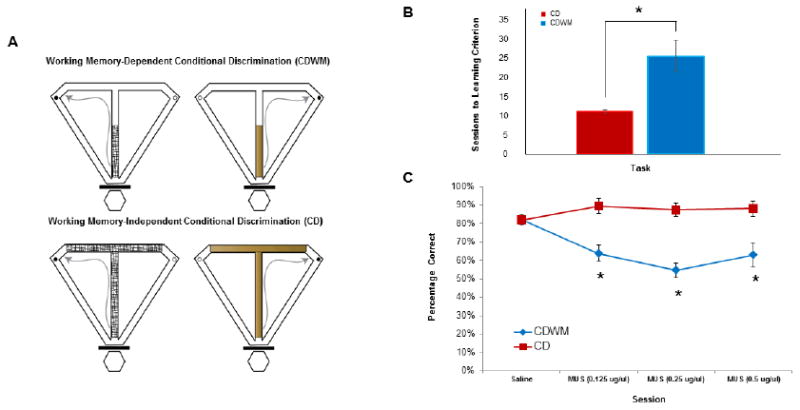Figure 2.

A) Schematic of the CDWM (top) and CD (bottom) tasks. During each task, rats were required to run up the central stem, choose a goal arm, consume the chocolate sprinkle reward (black dots on figures), and return to the start box via the return arms where they were confined until the next trial. Rats were required to choose the goal arm that contained reward based on the texture and appearance of a floor insert (e.g., left on mesh, right on wood). For the CD task (bottom), the floor insert covers the stem and goal arms. For the CDWM task (top), the floor inserts only cover the first half of the maze stem. B) Number of sessions needed to reach learning criterion (>80% correct for two consecutive sessions) between the CD (red) and CDWM (blue) tasks. C) Choice accuracy for the group that learned the CD task (red) and the group that learned the CDWM task (blue) in response to microinfusions of PBS (control) and 3 concentrations of muscimol. For all 3 muscimol concentrations, RE/Rh inactivation impaired choice accuracy on the CDWM task, but not the CD task. Error bars represent standard error of the mean (SEM), *p < 0.01
